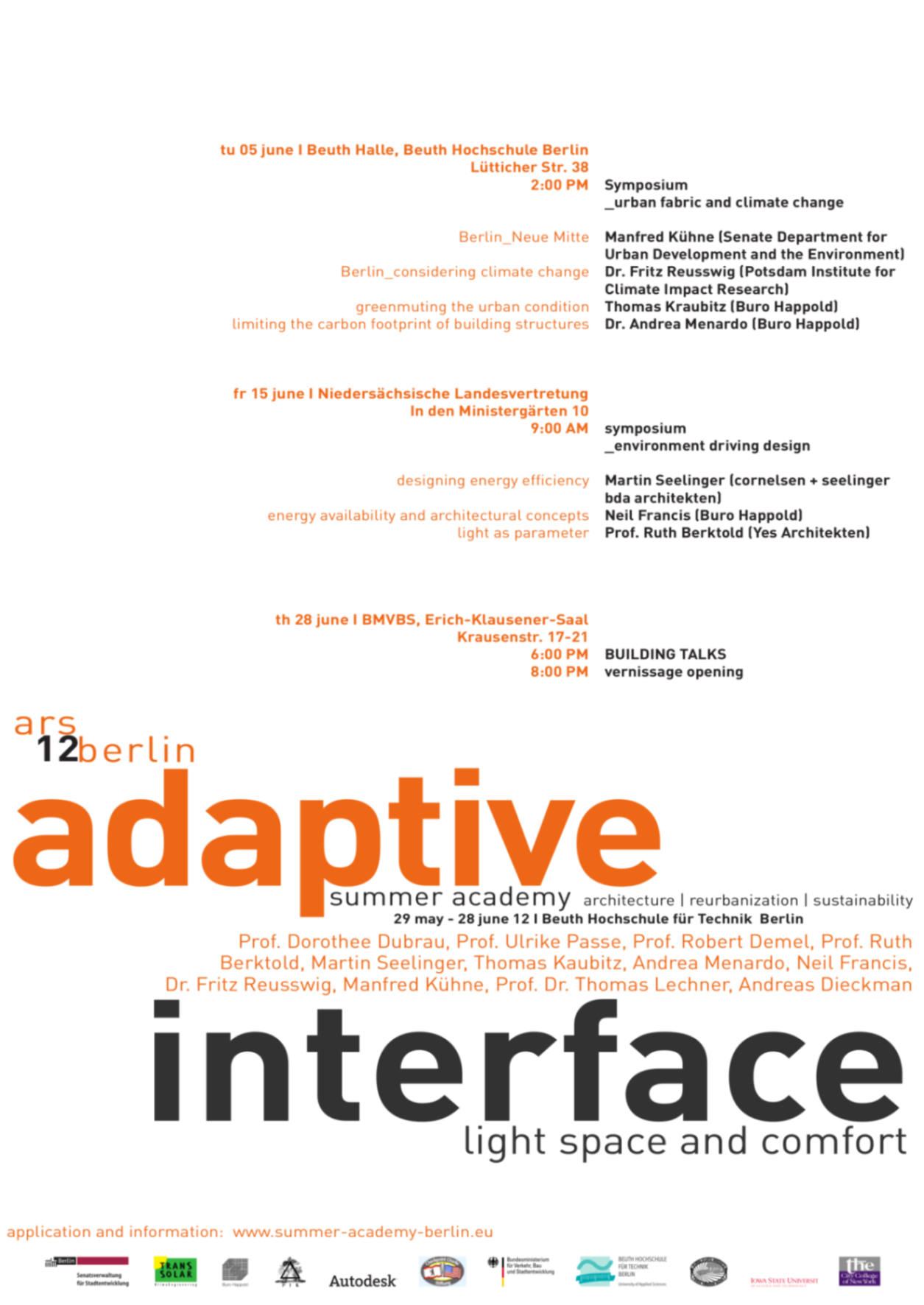
This summer’s workshop is seeking to research and apply parameters to design a building envelope in relationship to light. “Architecture is the learned game, correct and magnificent, of forms assembled in the light.” Corbusier. Light like no other matter impacts the perception and comfort of spaces. Without light form and space can hardly be experienced. Architecture always responded to the scarcity or abundance of light. Vernacular architecture gave an answer to how much light was to get into the room and how this was to be adjusted. The benefit was a comfort zone balancing light and heat.
With climate change in mind architecture more than ever is to find a way to create spaces which cater to the changing conditions. The challenge of climate change will above all become the key parameter to be taken into consideration.
Space, separated from the environment, always came along with the benefit of physical comfort. The effort of building walls, roofs, doors and openings offered the opportunity to create space controlled and manipulated by mankind. Even though the skin of the human body, like no other intelligent device is able to adapt to numerous conditions, hot and cold, dry and humid, adapting to a much broader range of conditions and levels of comfort came along with clothing and building.
With global warming the programming of the buildings envelope meets new challenges. As Stephane Hallegatte, a French meteorologist outlined; building for one climate is no longer the question, instead building with the lifespan of a building in mind, the building needs to be able to adapt. Building for two climate conditions is at stake.
The Berlin urban fabric, very much was developed following the changes introduced by energy driven technical innovations like James Watt’s steam machine or Thomas Edison’s light bulb just to name two. The building typology, developed along pattern books and best practice approaches, proves even today to be able to accommodate multiple tints of work - living scenarios. This is not to say that this outcome was planned, rather that we are able to evaluate today which of these components will suite sustainable standards.
Much like Aldo Rossi outlined it in his book L'architettura della città the shape of the city depends on the buildings impact on the public space more so after the program of the building is outdated. The boundary of the building reflects the buildings position within the urban context and likewise as a function of circulation and excluded space. This Janus like phenomena, the orientation towards the inside and the outside, the idea of separation and connection offers a unique field of research to explore the in-between.
Berlin recently has published a masterplan for the redevelopment of the city center around the TV tower. Interesting enough the design in favor is based on the historical urban footprint. We will explore how much this footprint, the layout of the public space and the building typology will suite the challenges of a soon to come much warmer climate. As a reference we will study the typology of the city of Florence and Siena in order to develop a proposal for Berlin.
To conclude with a quote from Ian Ritchie:
“Our empathy lies with the lighting designer who says that the longer we keep the lights switched off the better we feel. And of course less energy will be consumed. If we allow the natural environment to be the instrument of design at all scales, then our designs will be more intelligent and more responsive to our senses.”

